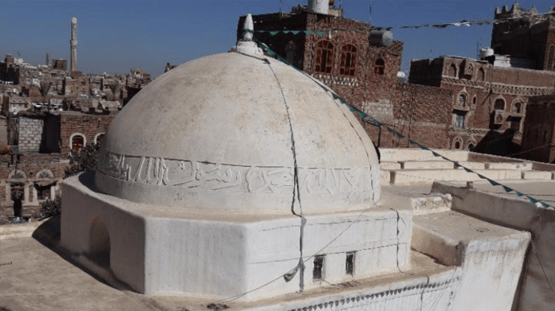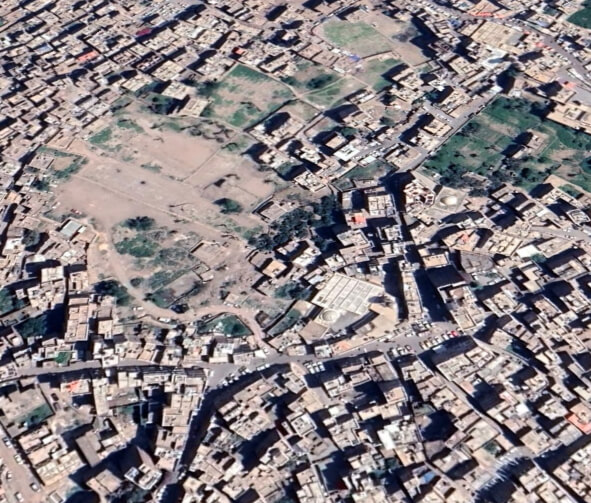
Al-Fulayḥī Mosque – Old Ṣan‘ā’
مسجد الفليحي- صنعاء القديمة
Monument description
Al-Fulaihy Mosque is one of the most ancient and precious Mosques in the Old City of Sana‘a. It was known as the second most prominent monument after the Great Mosque. The Mosque was smaller during the era of the first founder and was subjected to many expansions in the following periods. It is located in the northern part of the Old City of Sana‘a in a neighborhood called Al-Fulaihi, on the main road leading from Sa’ila to the Azdmar area (Azmar). It is bounded to the north by Al-Bustan (Miqashama Al-Fulaihi) and to the south by the main road linking Al- Sa’ila and Suq Al-Zumar, from the east by the road leading to Harat Muammar, and from the west by the road leading to Al-Bustan.

Architectural and cultural value
Construction style and built date: Al-Fulaihy Mosque is located in the Old City of Sana‘a, so the buildings and facilities of the Mosque will not differ from the style of its architectural context. Hajj Ahmad Abdullah Al-Fulaihy built the original Mosque in 665 AH. It consisted of four central halls southeast of the present Prayer Hall. The expansions of the Mosque continued until the end of the reign of Imam Muhsin bin Muhammad Fayi in the year 1194 AH (1780 CE).
Components of the Mosque: The monument consists of the Prayer Hall, the Dome (part of the smaller Mosque) to the west of the Prayer Hall, the Minaret and Al-Matahir in the southeast. Next to the western entrance to the Prayer Hall are the founders’ Mausoleums that open to the Dome, and on the northwest side are the blessing and pilgrimages Halls. The women’s Chapels were built on the second floor on the southeastern and oldest western Halls, the bathrooms, the modern ablutions, and the orchard (Al-Muqsama) are on the northern side of the Mosque. The Mosque used to contain spacious houses for the students (non longer existing) extending along the length of the floor. The upper part of the southern area of the Mosque overlooked the main road, but it was completely removed to build a school for girls’ education in its place. The Mosque occupies an area of 4,000 m2.
- Justifications for intervention:
- 1. Neglecting the competent authorities in carrying out periodic restoration work due to the lack of budgets for the repairs
- 2. Preserving the monument from disappearance and stopping the damage caused to the monument from expanding
- 3. Restoration of the damage to the Mosque resulting from the flight strikes of the northern part of the Old City of Sana‘a
- 4. Contribute to the restoration of damaged monuments in a proper manner in order to keep Old City of Sana‘a on the UNESCO list.
- Monument conditions and treatments:
-
The monument is generally in good preservation condition, however there are some obvious signs of damage that need urgent intervention.
Urgent interventions to rescue the monument
The monument needs urgent intervention to obtain a complete restoration before unprofessionally made works are initiated.1. The presence of vertical and horizontal cracks in the Prayer Hall, the Minaret, and the western women Prayer Hall
2. Unprofessionally made restoration and distortion of the decorations, inscriptions and writings of the entire Dome, and wrongly use of oil paints in the Prayer Hall and the Dome
3. The development of concrete buildings around the Monument, Minaret, Prayer Hall, Ablution Units and the foundations
5. Inappropriate use of plaster and white cement coverings on the Minaret, Prayer Hall and Dome
6. The northwest region has become dumping ground for garbage, accumulation of waste and debris from the abandoned, neglected and collapsed buildings
7. The height of the towers adjacent to the Monument and the continuation of constructions near it and its orchard is also an issue
8. Damage to the eastern walls of the Mosque and paving the square with cement tiles.

Countries








